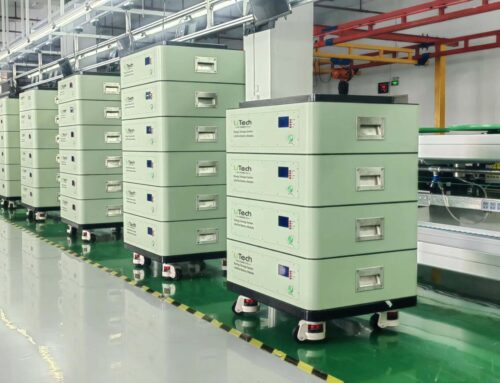
Switching from lead-acid batteries to lithium-ion batteries in a golf cart is a smart upgrade. It makes the cart lighter, lasts longer, and works better. but how to replace a golf cart battery? Here’s how to do it properly:
Tools & Materials Needed
- Lithium-ion batteries (correct voltage and capacity)
- Battery management system (BMS) (usually built into lithium batteries)
- Wrench or socket set
- Battery charger (compatible with lithium batteries)
- Insulated gloves and goggles
- Battery terminal protectant (optional)
① Step 1: Choose the Right Lithium-Ion Battery
- Make sure the total voltage of your lead-acid setup matches. For example, if your cart has six 6V lead-acid batteries, you need a 36V lithium battery.
- Check the amp-hour (Ah) rating for adequate capacity.
- Ensure the battery fits in the compartment. Custom rechargeable battery sizes are available.
- Some lithium batteries come with a built-in BMS for protection against overcharging, overheating, and deep discharge.
② Step 2: Safety Precautions
- Park the golf cart on a level surface and turn it off.
- Engage the parking brake.
- Wear safety gloves and goggles.

③ Step 3: Remove Old Lead-Acid Batteries
- Take a Picture – Before disconnecting anything, take a photo of the wiring for reference.
- Disconnect Negative (-) Cables First – Use a wrench to loosen and remove the negative cables (anode and cathode).
- Disconnect Positive (+) Cables – Remove the positive terminals.
- Remove the Batteries – Carefully lift out the heavy lead-acid batteries(replace a golf cart battery).
④ Step 4: Clean the Battery Compartment
- Remove corrosion, dirt, or acid residue using a wire brush and a baking soda-water solution.
- Let everything dry completely.
⑤ Step 5: Install Lithium-Ion Batteries
- Place the New Batteries – Install them securely in the battery compartment. and lithium is a high energy density battery.
- Rewire in the Same Configuration –
- If using a single lithium battery pack (e.g., 36V or 48V), connect it directly to the main cables.
- If using multiple smaller batteries, wire them in series to match the cart’s voltage. Experts usually recommend a single battery pack.
- Secure the Connections – Tighten terminals properly but don’t overtighten.
- Apply Battery Terminal Protectant – This helps prevent corrosion.
⑥ Step 6: Upgrade the Charger
- Lead-acid chargers are NOT compatible with lithium-ion batteries.
- Use a lithium-specific charger to avoid damaging your new batteries.

⑦ Step 7: Test the System
- Turn on the golf cart and check for proper operation, check charge and discharge
- Take a short test drive to ensure performance and functionality.
⑧ Step 8: Charge the Batteries
- Fully charge the lithium batteries before extended use.
- Follow the manufacturer-recommended charging procedure.
Benefits of Lithium-Ion Batteries in a Golf Cart
Lighter Weight – Reduces the cart’s weight, improving speed and efficiency.
Longer Lifespan – Typically lasts 5-10 years, compared to 3-5 years for lead-acid.
Faster Charging – Can charge up to 5X faster than lead-acid.
No Maintenance – No need to check water levels.
Consistent Power – No power drop-off as the charge depletes.
Would you like recommendations for the best lithium batteries for your golf cart?








Leave A Comment